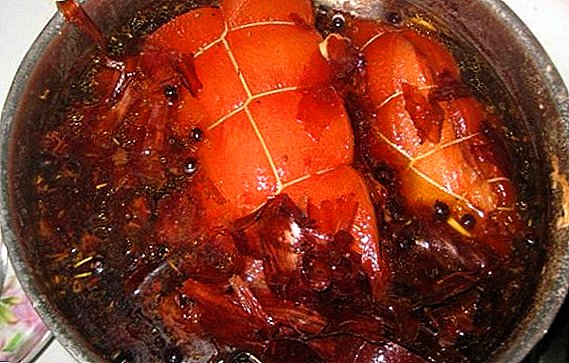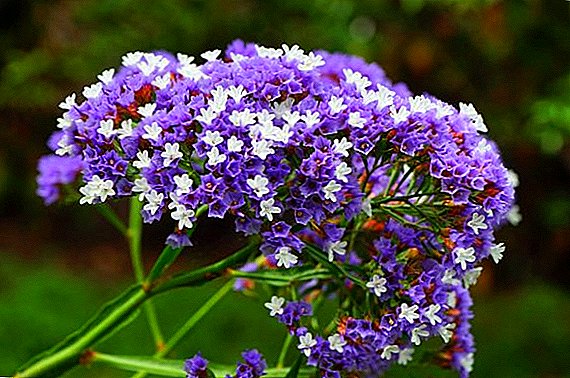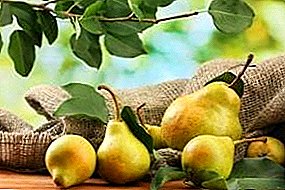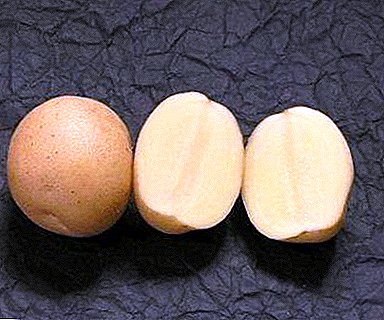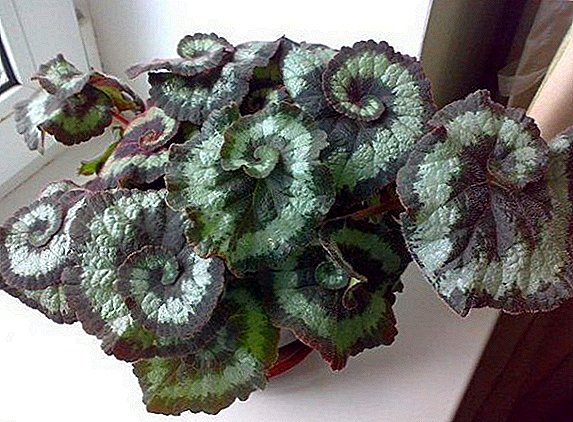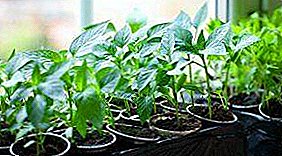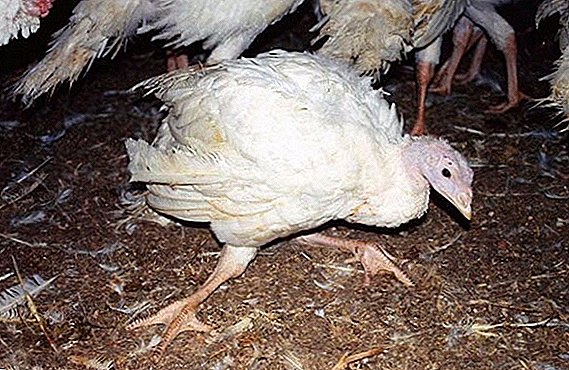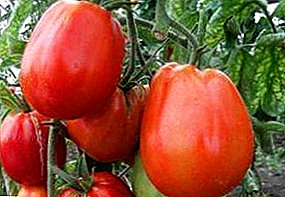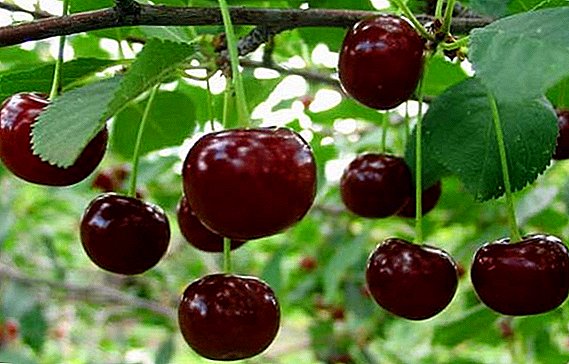 Cherry Zhukovskaya considered a classic breeding. The variety is quite old and very often found in garden plots. Cherry Zhukovskaya, a description of the variety with subject photos of which will be provided later in the article, according to the reviews has excellent taste qualities. Productivity is always abundant, and there is no need to apply special efforts to the care of a fruit tree. That is why gardeners are happy to grow this tree and use the fruit for seasonal harvesting, as well as for preparing various kinds of baking and desserts.
Cherry Zhukovskaya considered a classic breeding. The variety is quite old and very often found in garden plots. Cherry Zhukovskaya, a description of the variety with subject photos of which will be provided later in the article, according to the reviews has excellent taste qualities. Productivity is always abundant, and there is no need to apply special efforts to the care of a fruit tree. That is why gardeners are happy to grow this tree and use the fruit for seasonal harvesting, as well as for preparing various kinds of baking and desserts.
Description
The history of this hybrid began several decades ago. She was withdrawn at the All-Russian Scientific Research Institute of S.V. Zhukov and E.N. Kharitonova. Breeding was carried out by pollination and was based on the Michurin varieties of cherries. Already in 1947, Zhukovsky cherries were recommended for cultivation in the Middle Volga, Nizhnevolzhsky, Central Black Earth and Central regions of Russia. 
Characteristic features of this type of fruit trees are:
- This garden tree is medium-sized, its height is usually about 2-3 m. Crohn is round, moderately leafy and spreading. The branches are slightly curved and covered with bark of a red-brown color. The buds are small, slightly pointed and without pubescence. The leaves are large and elongated, with small teeth along the edges. The surface of the leaves is glossy and slightly concave inward, which resembles a boat.
- The inflorescences of the Zhukovskaya cherry are formed from five large flowers of white color, their diameter is about 3 cm. The petals of the flowers are large and round. Calyx cone-shaped and green.
- The main part of the fruit ripens on the bouquet branches, a small part is formed on the growth of the last year. The berries are fairly large in size, weighing from 4 g to 7 g. Their shape is oval: a round base and an elongated tip. Cherry maroon color. Their bone is also quite large and takes up about 7.7% of the total mass of the fetus. The flesh is characterized by its dense structure and juiciness. To taste the berries are pleasantly sour-sweet, somewhat similar to sweet cherry.

Features of growing
When planning to grow this sort of cherry on your plot, you should know what conditions will be optimal for the rapid and fruitful development of the Zhukovskaya variety.
Did you know? According to the reviews, the Zhukovskaya cherry variety can continue its life up to 20 years, 15 of which the tree has abundant fruit.
Climatic conditions
The tree loves heat and sunlight. So be sure to plant it in an open area for the sun. The best option would be a place near the house or garage. It is also important to properly distribute the trees on the site to provide them with a place to grow. If possible, the distance between seedlings should be at least three meters.
Check out such varieties of cherries as Kharitonovskaya, Vladimirskaya, Shokoladnitsa, Black Large, Turgenevskaya, Felt Cherry.
Soil for wood
For good growth of this fruit tree suitable loamy soil or sandy sable. It is not recommended to plant a variety on clay soil. The acidity of the earth is also important. It is better if the indicator is close to neutral.
If the acidity at the site is increased, then it can be leveled using liming. The swampy land of Zhukovskaya cherry is not suitable either.  If it happens so that groundwater is located very close to the ground surface, and there is no more space for planting seedlings, then a high-quality drainage system should be laid. The site should be rich in nutrient mineral and organic elements.
If it happens so that groundwater is located very close to the ground surface, and there is no more space for planting seedlings, then a high-quality drainage system should be laid. The site should be rich in nutrient mineral and organic elements.
If such plants as bird cherries, linden, rowan, maple, legumes and cereals grow well on the place where the cherry is planned to be planted, this indicates that such a plot will be enjoyed by the Zhukovskaya cherry variety. Did you know? Cherry in its composition has a large number of coumarins. These are substances that can beneficially affect blood clotting and blood formation. In this regard, the cherry is very useful for people who suffer from vascular and heart diseases, and also have the risk of blood clots.
Planting cherries Zhukovskaya
Planting cherries requires special attention. First you need to choose the seedlings, then plant them on your site, following a number of recommendations.
Selection of seedlings
First of all, it should be noted that buying seedlings is best in nurseries.  If there is no such possibility, then it is necessary to carefully select the seller in order not to purchase low-quality planting material.
If there is no such possibility, then it is necessary to carefully select the seller in order not to purchase low-quality planting material.
You need to take those seedlings that grew in conditions close to those in which you plan to grow them in the future. Such a copy will take root faster and easier in a new place, it will take root more easily, which means it will endure the winter cold more firmly.
There should be no mechanical damage on the seedling, there should be no growths and formations of different shapes. The root system must be hydrated and fresh.
Quality planting material should roughly correspond to the following indicators:
- height is about 90-130 cm;
- root length from 20 cm to 35 cm;
- shtamb diameter of 10-15 cm

Scheme and technology of landing
The optimal scheme of planting cherries Zhukovskaya variety: 5x3 or 5x2.5 m. It is better to dig the holes in advance, so that the soil before planting has time to be aerated. Their depth should be about 50-60 cm.
Important! If the roots are dry or the bark of the branches and trunk is damaged, then it is impractical to buy such a seedling.The width is the same. Only the top, most fertile ground ball should be laid in the pits; mineral fertilizers (potassium chloride, phosphate) and organic matter (humus or rotted manure) should also be added. If the soil is clay type, then you can fill up a small amount of sand.
Planting is recommended in the spring, as soon as the earth thaws, but always before the start of the growing season, so that the buds are still closed. Root system before planting need to soak for a day, adding growth stimulant to the water. 
The process of planting seedlings step by step is as follows:
- In the landing hole you need to make a groove. Dimensions should be sufficient so that the roots are freely located in it and do not wring.
- A wooden peg is placed in the middle of the hole, with the help of which a young tree can be fixed later.
- A cherry seedling is lowered into the well so that the root neck is 5 cm higher than the ground level.
- Roots are carefully covered with earth. Then the ground closes the entire pit. The ground should be carefully tamped with a shovel or feet in the direction from the edge to the trunk. It is not necessary to press hard to avoid damaging the seedling and the root system.
- A hole should be formed on the near edge section for further irrigation.
- Then you need to plentifully water the tree at the rate of 30-40 liters of water for one seedling. If, as a result of irrigation and land subsidence, roots appeared, they should be filled with soil mixture.
- The hole can now be mulched with loose earth or sawdust.
- At the end of the seedling must be tied with a soft twine or rope to a wooden peg. The peg itself is recommended to be cut at the level of the first side branch of the tree.

Proper care of the plant
Despite the fact that this variety of cherries is very unprincipled in care, there are still a number of requirements that a gardener must take into account when growing such trees. Did you know? Cherry can be poisoned. Or rather her bone. It contains amygdalin, which in the human body is converted into hydrocyanic acid. They are especially dangerous to children. Adults, one or two bones will not bring harm.
Activities that will allow you to grow a strong and healthy garden plant with a good indicator of fruiting, consist mainly in pruning, watering, timely fertilization and protection from disease.
Watering and feeding
For a season, you need to water a tree four times:
- the first watering takes place about a week and a half before the tree starts to bloom;
- second watering - after the flowers crumble;
- the third soil moisture should coincide with the period of fruit ripening;
- fourth watering - after harvest, but no later than October 17-20.
 You can water the tree in two ways:
You can water the tree in two ways:- Pour water into the grooves. First, these grooves need to dig. They should be placed at a distance of 50 cm from the tree - the first, and after another 50 cm - the second. Water is poured into such grooves, and when it fully enters the ground, the soil is mulched with sawdust, straw, peat, or other material of organic origin.
- The second method is drip irrigation. It is necessary to place around the trunk tape in a spiral position. Between a smaller and larger diameter, a distance of about 30 cm should be maintained. Dropper spacing - 20-30 cm. Using this method, it will be possible to cover the area of the entire root system.
- In spring, the tree needs additional dressing during the flowering period and immediately after it. During flowering, you need to make a solution of nitrate, which must first be diluted in water, observing a proportion of 1:50. You can also use hydrated lime (take 200 g per 10 liters of water). After the tree has finished blooming, you can fertilize the root zone with a solution of nitroammofoski (1: 200). Each composition will be consumed about 30 liters under one tree.
- Summer fertilizer is held in the second half of June. It is necessary to conduct foliar feeding, sprinkling the tree with a 2% solution of magnesium sulphate.
- In the last days of September, the Zhukovskaya cherry should be fertilized with a mixture containing 20 g of potassium chloride, 40 g of superphosphate in granules and 10 liters of water. This solution is enough for one square meter of land.

Soil care
Caring for soil around the trunk is no less important a process than watering and timely feeding the tree. It is necessary to keep the near-stem circle clean and not to allow the weeds and weeds to grow there, as they will prevent the tree from fully feeding.
This is especially important to do in the early years of tree growth in the garden. Weeds can be harvested both manually and by mowing. Pesticides can already be sprayed near mature trees.
Important! If weeding is neglected, then the yield and quality of fruits will rapidly decline.
Cropping and crown formation
Pruning cherry trees should be carried out in several stages.
The first procedure is carried out during the planting of seedlings. It should be shortened by about one third. The height of the trunk should be about 40 cm. The skeleton of the tree itself is formed from the main 6-8 branches, located at the same distance from each other in tiers.  In an annual tree, young branches that have reached a length of 20-40 cm do not need to be cut. If the length exceeds 50 cm, then it is necessary to shorten them by one third. You should also remove shoots from the roots, cut off all broken and damaged branches.
In an annual tree, young branches that have reached a length of 20-40 cm do not need to be cut. If the length exceeds 50 cm, then it is necessary to shorten them by one third. You should also remove shoots from the roots, cut off all broken and damaged branches.
Reveal the subtleties of cherry pruning in the spring.Starting from the fifth year of life of the tree, you can begin to form the crown. Skeletal branches need to be shortened in the place where the growth of the side branches stops. New shoots that stretch up and thicken the crowns should be pruned in the place from which they depart from the main branch. The trunk itself should be shortened to 3-3.5 m.
Autumn pruning - especially preventive. Again, the affected and dried branches must be removed, after which they must be removed from the site and burned. This is done because of the likelihood of finding them harmful individuals.  Once every three years, it is possible to carry out the so-called anti-aging pruning. This should be done in the case when the growth of branches is less than 15 cm per year. It is necessary to shorten the skeletal branches by one third.
Once every three years, it is possible to carry out the so-called anti-aging pruning. This should be done in the case when the growth of branches is less than 15 cm per year. It is necessary to shorten the skeletal branches by one third.
Important! The simultaneous removal of a large number of branches can provoke a cicatera, so rejuvenating pruning should be carried out in several stages. Wounds, which were formed as a result of cuts, need to be treated with garden pitch.
Diseases and pests
The hybrid is very resistant to coccomycosis and calcium blotch. But, unfortunately, the list of diseases that can threaten garden trees does not end there.
Check out the main diseases and pests of cherries.Consider the main ones, as well as methods of dealing with them and methods of prevention:
- Monilial burn This disease can affect fruits, flowers, ovaries, as well as young growths. Such a disease manifests itself in the form of gray spots on the parts of the tree, which are covered with pillows with fungal spores. Damaged shoots emit gum, because the bark begins to crack, and the fruits rot. Treating a tree can be done using HOM (40 g of the product will be needed for 10 liters of water). Bordeaux fluid can also be used. Sick branches will need to be removed and destroyed. Such a disease can be avoided by digging the soil in autumn, as well as cleaning the fallen leaves.

- Scab. The main symptom is brown spots that cover the berries. Foliage begins to curl up in the tubes and gradually dry.
If still unripe fruits succumbed to a defeat, they will stop developing. To avoid such a problem, it is necessary to spray copper chlorine (10 liters of water 40 g) or Bordeaux mixture (1%) on the tree at the budding stage, after flowering and after fruiting.

- Rust. Brown spots on the outside of the foliage will be a symptom.
If such a tree is not treated, then it will not bear fruit. It is necessary to use copper oxychloride before flowering and after its completion. Careful and timely cleaning and destruction of fallen leaves will help to avoid the disease.
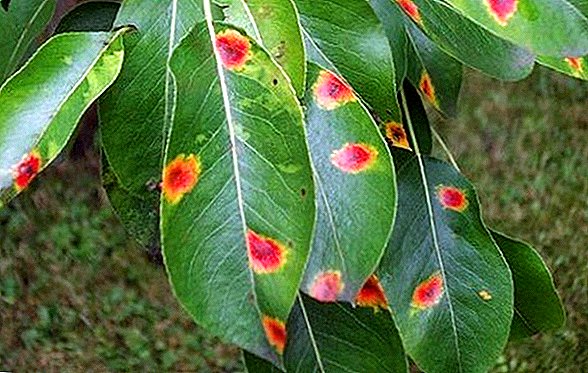
- Gommoz. The disease can manifest itself in trees that have been affected by fungus. On the surface of the trunk and branches appears gum, which subsequently hardens. Wounds need to be treated with 1% copper sulfate.
To prevent the occurrence of the disease, you should avoid mechanical damage to the tree. Sections of the same necessarily be worked out garden pitch.

- Klesterosporiosis. Brown spots that are framed by a red border are a clear sign of this disease. After two weeks, the affected leaf plate will begin to "crumble", which will cause holes in the leaves. Shoots are also covered with this kind of stains, besides, cracks form on these places and gum starts to show.
It is necessary, after the tree has finished to bloom, to spray it with chlorine dioxide of copper or Bordeaux mixture.

Pests can also be a threat to Zhukovskaya cherry varieties:
- Aphid. She settled on a tree, begins to feed on the sap of the leaves, causing the latter to dry out. It is necessary to treat the trees with Nitrofen in early spring (30 g of the preparation should be taken in a bucket of water).
Sprayed leaves should be sprayed with Karbofos (30 g for 10 liters of water). Removing disease will help remove the root thickets.

- Weevil. This is a beetle that feeds on cherry flowers and buds. Inside the berries, females will be able to lay eggs, and the larvae will then eat the contents of the bones.
In the fight against the weevil, spraying with “Karbofos” will help in the period when the flowering of the tree ends. As a preventive measure, it is recommended to conduct autumn loosening of the soil and maintain the purity of the tree circle.

- Mucus sawfly. The pest infects the leaves as if scraping cloth from them. Because of this, the foliage dries out. As soon as the larvae are noticed, they should be immediately treated with Karbofos.

The advantages and disadvantages of the variety
Zhukovskaya cherry has both advantages and disadvantages:
- The undoubted advantage is the high yield of the variety, because with one adult tree you can take up to 30 kg of juicy fruits.
- Also a very nice feature is the resistance to shattering. Even fully ripe berries are able to hold onto branches.
- The fruits are large, beautiful, tasty and juicy. In addition, the pulp is easily separated from the bone.

Disadvantages:
- As for the drawbacks, the tree is not very resistant to cold. In winter, flower buds can often suffer, and wood can be slightly frozen.
- Self infertility. For tying berries need a neighborhood in other pollinating trees.
- Stone. The size of the bone rather big and able to take a significant mass of the fetus.



